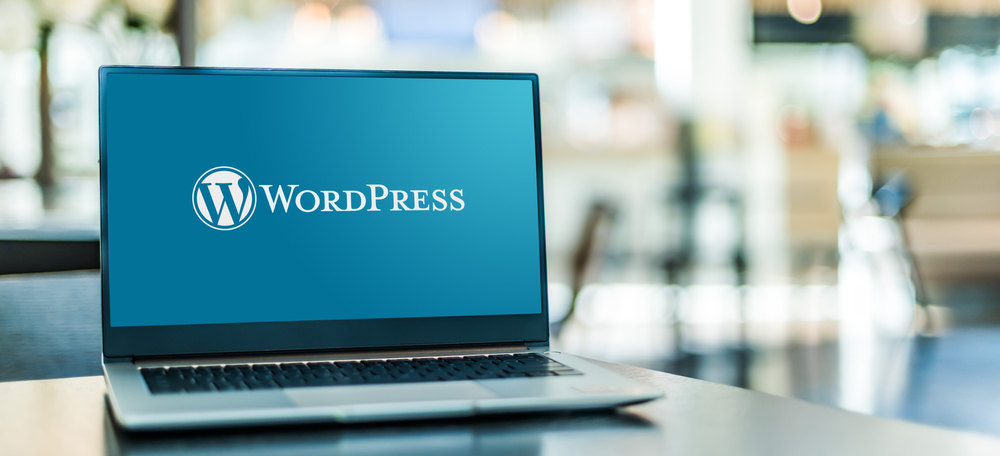
Mastering WordPress: Essential Tips and Tricks for Customizing and Maintaining Your Website

Mastering WordPress: Essential Tips and Tricks for Customizing and Maintaining Your Website
WordPress has become the go-to tool for millions of website owners and bloggers around the world. Its user-friendly interface and extensive customization options make it a popular choice for both beginners and experienced developers. In this article, we will explore some essential tips and tricks that will help you master WordPress (the blogging platform) and take your website to the next level.
1. Choose the Right Theme
The first step in customizing your WordPress website is selecting the right theme. WordPress (the platform for bloggers) offers a wide range of free and premium themes, each with its unique design, layout, and features. Take the time to explore different options and choose a theme that aligns with your website's purpose and aesthetics. Look for a responsive design that adapts to different devices, as well as a theme with good reviews and regular updates.
2. Customize Your Theme's Appearance
Once you have selected a theme, you can further customize its appearance to match your brand or personal style. WordPress (or WP) provides a built-in Customizer that allows you to change colors, fonts, logos, and more. This intuitive interface lets you see the changes in real-time, making it easier to experiment and find the perfect look for your website. Don't be afraid to play around with different settings until you achieve the desired result.
3. Enhance Functionality with Plugins
One of the biggest advantages of using WordPress is the extensive plugin library. Plugins are add-ons that enhance your website's functionality, offering features ranging from contact forms and social media integration to search engine optimization and e-commerce capabilities. Before installing a plugin, ensure it is compatible with your version of WordPress and has positive user reviews. Too many plugins can slow down your website, so choose wisely and only install what you really need.
4. Optimize Your Website for Speed
Website speed is crucial for user experience and search engine rankings. A slow-loading website can drive visitors away and negatively impact your SEO efforts. To optimize your WordPress (WP) website for speed, there are several steps you can take. Firstly, choose a reliable hosting provider that provides fast servers and CDN integration. Additionally, optimize your images, use caching plugins, and minify CSS and JavaScript files. Regularly monitoring your website's loading time and addressing any issues promptly is vital for maintaining a fast and efficient website.
5. Regularly Update WordPress and Plugins
Keeping your WordPress installation and plugins up to date is essential for security and performance. WordPress releases regular updates that address vulnerabilities, improve features, and ensure compatibility with the latest technology. To update your WordPress version, go to the dashboard and click on the Updates tab. Similarly, regularly check for updates for your installed plugins and themes. This simple maintenance task can prevent security breaches and ensure your website functions optimally.
Frequently Asked Questions
1. How can I backup my WordPress website?
WordPress provides various backup plugins, such as UpdraftPlus and BackupBuddy, that allow you to create automatic backups of your website and its database. These plugins enable you to store backup files on your server, cloud storage services, or download them for offline storage.
2. Can I customize my WordPress website without coding?
Absolutely! WordPress provides a user-friendly interface that allows you to customize your website without any coding knowledge. You can easily modify themes, change colors and fonts, and add or rearrange widgets using the built-in Customizer and page builders like Elementor or Beaver Builder.
3. How can I improve my WordPress website's search engine rankings?
There are several ways to improve your WordPress website's search engine rankings. First, optimize your website's content by conducting keyword research and incorporating relevant keywords in your titles, headings, and throughout your content. Additionally, install an SEO plugin like Yoast or Rank Math to help optimize meta tags, generate XML sitemaps, and provide insights on improving your SEO efforts.
4. What should I do if my WordPress website gets hacked?
If your WordPress website gets hacked, it's crucial to act quickly. Start by contacting your hosting provider to inform them of the security breach. Change all passwords, including your WordPress admin account, FTP, and database credentials. Scan your website for malware using security plugins such as Wordfence or Sucuri. Restore from a recent backup and update all plugins and themes to their latest versions to ensure you have the most secure versions installed.
5. How can I improve the performance of my WordPress website?
To improve the performance of your WordPress website, make sure you use a well-optimized theme and limit the number of installed plugins to the essentials. Optimize your images by compressing them without hindering quality. Use caching plugins like WP Super Cache or W3 Total Cache to serve static versions of your website, reducing server load and improving loading times.
By following these essential tips and tricks, you can master WordPress and create a customized and well-maintained website that leaves a lasting impression. Whether you're a blogger, small business owner, or an experienced developer, WordPress provides a powerful platform that can be tailored to suit your individual needs. So start experimenting, get creative, and unlock the full potential of WordPress for your website!
Other useful resources
- https://en.wikipedia.org/wiki/WordPress
- https://www.wordpress24plus.com/services/wordpress-developer/